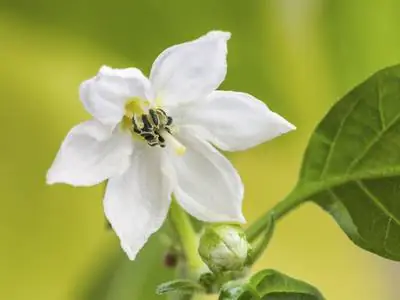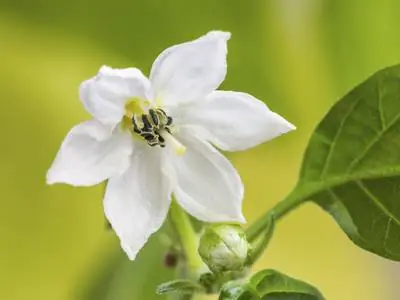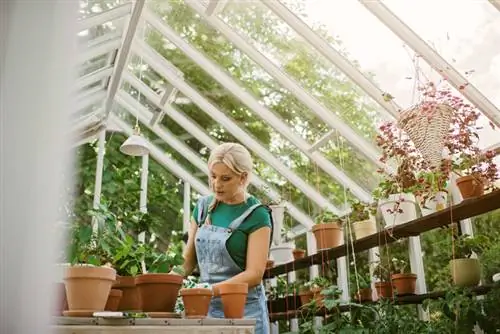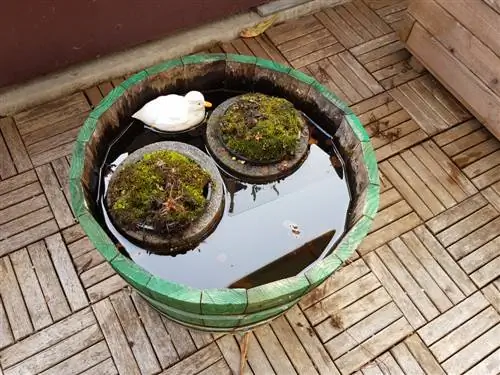- Author admin [email protected].
- Public 2023-12-16 16:46.
- Last modified 2025-01-23 11:19.
Insects pollinate chili flowers in the open air. Artificial insemination is essential for indoor cultivation or for pure seeds. Anyone who knows their way around can prevent unwanted hybrids - using a sophisticated strategy and simple means.

How to pollinate chili flowers manually?
To successfully manually pollinate chili flowers, carefully open the flower, use a fine brush to transfer the pollen, and protect each pollinated flower with a cover of gauze or tulle. Be sure to use different brushes for different varieties.
Cross-pollination torpedoes variety purity
With pretty flowers, chilies attract insects all summer long in the hope of pollination. This is not always desirable, especially if you are growing different varieties. So-called cross-pollination ultimately leads to hybrids that no one likes.
There is a lack of pollinating insects in the winter garden, living room or greenhouse. Without targeted intervention by the gardener, sooner or later the longed-for pods will not appear.
Good to know that chili plants are self-fertile. Specifically, this means that fertilization can take place within the same inflorescence. The pollen only has to move from one flower to the other on the individual plant.
Pollinate chili before the flowers open
For artificial pollination to be successful, the mercury column must not fall below 19 degrees Celsius. The tool consists of a fine hair brush (€3.00 on Amazon) of each type and a pair of tweezers.
- carefully open the flower with the tweezers
- transfer the pollen from one flower to the other with the brush
- pack each pollinated flower in a gauze or tulle cover and label it
It is essential to use a separate brush for each type. Alternatively, cotton swabs can also do the job.
Do not shake the flowering chili
At first glance, the chilli layman assumes that shaking the plants at the right time will achieve the desired effect. This can only be agreed if there is a single variety within 400 meters.
The vast majority of chili enthusiasts favor growing different varieties. In this case, shaking is extremely counterproductive. The delicate pollen spreads unhindered to all chili plants in its path.
Outdoors, just a gentle gust of wind is enough to achieve the same effect. That's why knowledgeable hobby gardeners pack their chili plants in air-permeable covers. To be on the safe side, they also carry out pollination with a brush.
Tips & Tricks
In allotment gardens, you can avoid investing in expensive gauze fabric to protect chili plants. Cheap tea bags that you can fill yourself are simply placed over individual flowers.






